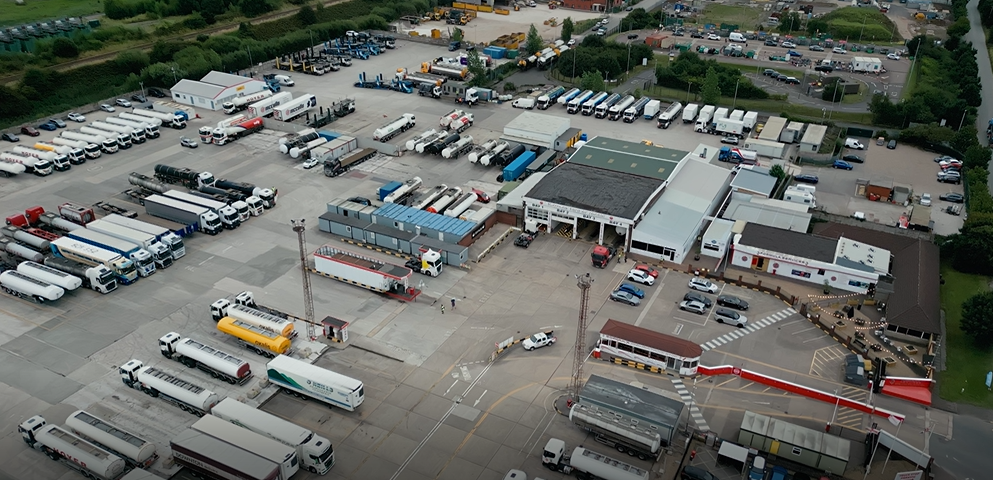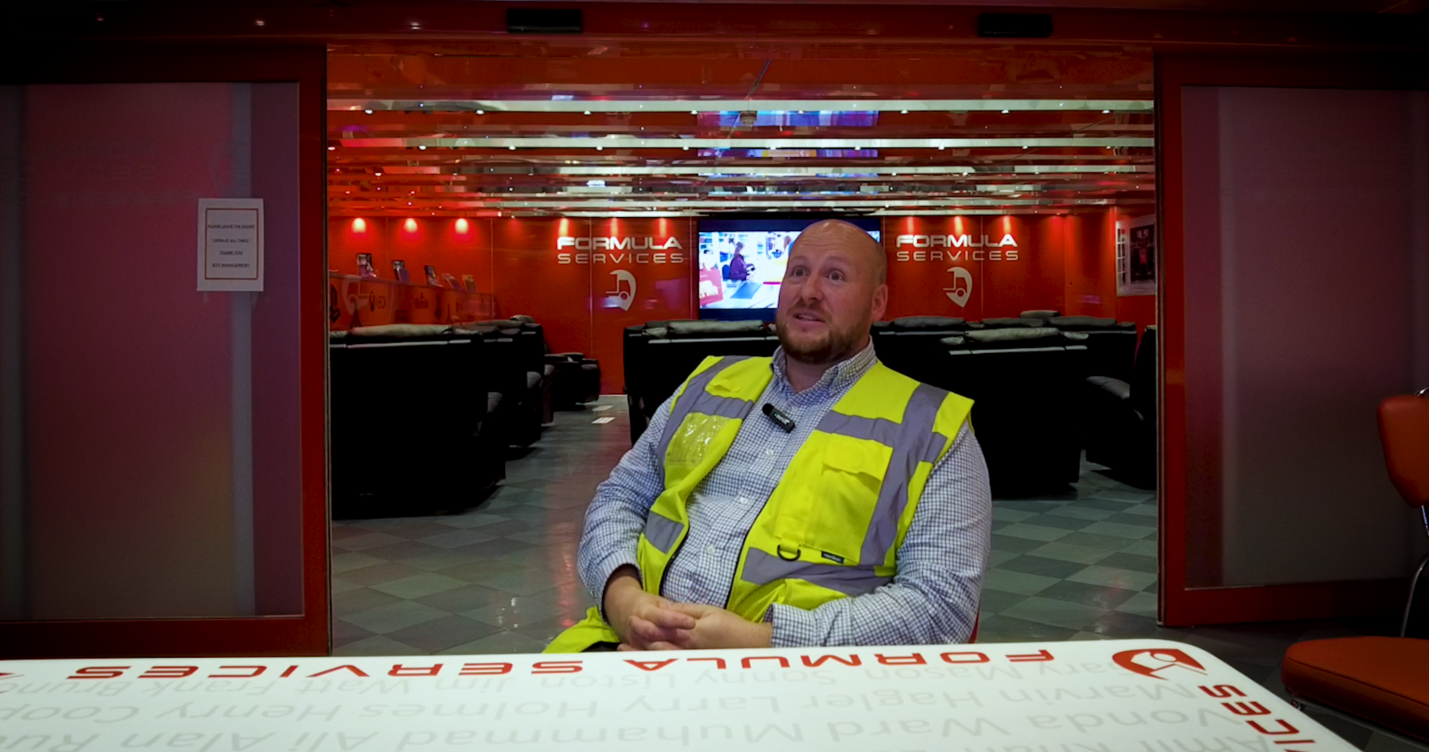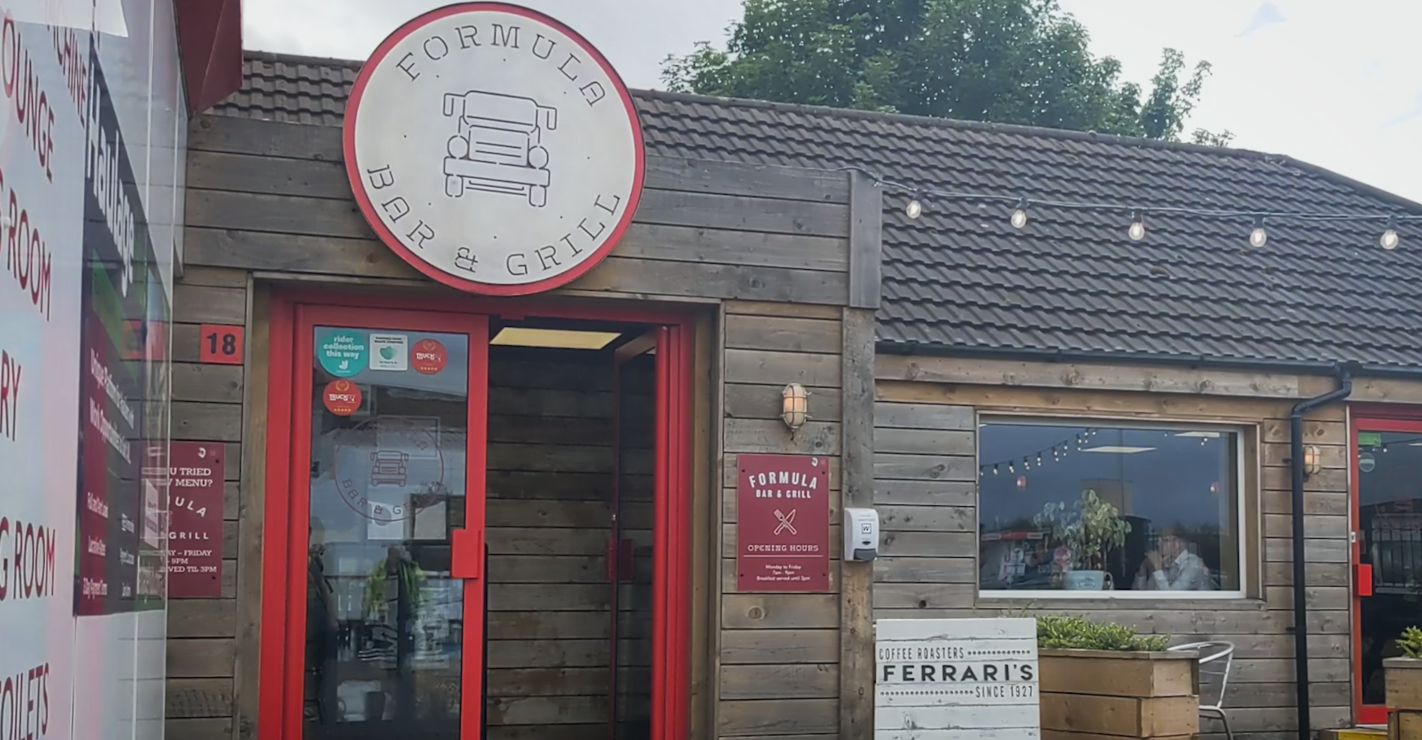
Susie Jones
All'interno di Formula Premier Truckstop: esplorazione del loro successo e del rapporto con SNAP
Creato: 07/08/2025
•
Aggiornato: 07/08/2025
A Ellesmere Port, a pochi passi dalla M53, si trova Formula Premier Truckstop. Eletto "Truckstop dell'anno 2023" nel Regno Unito, il sito è diventato uno dei preferiti dalla comunità degli autotrasportatori. Rendendo omaggio al loro legame con la Formula 1 (un tempo il sito forniva carburante alle auto da corsa di tutto il mondo), l'autogrill è ricoperto dall'iconico colore rosso, con numerosi cimeli sportivi che tengono occupati i visitatori per ore.
Mentre festeggiano il loro 10° anniversario, ci sediamo con il direttore operativo Ash Evans per parlare di tutto ciò che riguarda i nuovi impianti e gli obiettivi di sostenibilità, il benessere degli autisti e il loro rapporto con SNAP.
"Da 10 anni operiamo come autogrill. Siamo aperti a tutti i camionisti, grandi e piccoli, rigidi e artici. Abbiamo una stazione di rifornimento aperta a patto che abbiate una carta carburante ", spiega Ash.

Strutture
Il sito ospita una serie di fantastiche strutture per offrire ai camionisti una casa lontano da casa.
Abbiamo circa 150 posti auto, un ristorante in loco, una palestra e servizi igienici dedicati a uomini e donne. Cerchiamo di includere il più possibile nel prezzo del parcheggio ", afferma Ash.
Mentre ci viene fatto fare un giro della sede, passiamo attraverso una sala giochi dedicata, attrezzata con un tavolo da biliardo e uno da ping pong, un'area lounge completa di poltrone massaggianti e una pletora di console di gioco per aiutare a rilassare un autista dopo un lungo turno. Per quanto riguarda gli aspetti più pratici, il sito offre servizi di lavaggio, una palestra e un'area cucina per preparare pasti fatti in casa. Chi non ha voglia di cucinare dopo una giornata al volante, può usufruire del ristorante in loco, che ora offre buoni pasto SNAP.
"Sono sempre alla ricerca di modi per migliorare il sito. Le strutture di cui dispongono rendono il luogo piacevole per gli autisti. Il viaggio di un autista è molto più sicuro e facile quando sa di avere questo tipo di strutture alla fine del viaggio ".
- Stuart Willetts, responsabile dello sviluppo commerciale nel Regno Unito di SNAP.

Di recente, il sito ha rinnovato le strutture femminili, con bagni all'avanguardia e simili a quelli di una spa. L'ammodernamento ha incluso una toilette e una doccia neutre dal punto di vista del genere: entrambe le aree sono chiuse a chiave per garantire sicurezza e protezione.
*"Abbiamo avuto un ottimo riscontro sulle nuove strutture e un grande aumento di autiste donne sul posto, il che è positivo", spiega Ash.
Scoprite le nuove strutture di Formula attraverso il nostro quickfire Q&A con Ash.

Come SNAP ha avvantaggiato Formula
Ash e il team hanno un rapporto stretto con Stuart Willetts, uno dei responsabili dello sviluppo commerciale di SNAP nel Regno Unito, che è sempre a disposizione per rispondere a qualsiasi domanda.
"Il rapporto che abbiamo con SNAP, e che abbiamo da diversi anni, riflette davvero quanto siete bravi in quello che fate ", afferma Ash.
Ash spiega come l'offerta di buoni pasto SNAP abbia portato benefici non solo agli autisti, ma anche al sito:
"Negli ultimi anni, una delle cose migliori è stata l'introduzione dei buoni pasto tramite SNAP. L'assenza di questa offerta era un po' negativa per gli automobilisti. Ottenere un pasto con il parcheggio e non doverlo pagare da soli è un grande vantaggio ".
Si è rivelato molto positivo in termini di soddisfazione dei clienti e di aumento dei ricavi ".
Benessere del conducente
Il benessere dei conducenti è da tempo un tema di discussione molto sentito nel settore. Con un tasso di suicidi tra i camionisti superiore del 20% rispetto alla media nazionale, le aree di sosta svolgono un ruolo fondamentale nel migliorare il benessere dei conducenti. Un obiettivo che, secondo Ash, non dovrebbe essere difficile da raggiungere per un autogrill:
*Gli autisti non vogliono molto. Vogliono un posto buono e pulito dove lavarsi, radersi, fare quello che devono fare e mangiare bene. Non è una grande richiesta per qualcuno, e non dovrebbe essere una grande richiesta per un'azienda fornirgliela".
Questo aspetto è stato certamente un punto chiave per Formula, che ha influenzato tutto, dalle strutture e dai continui miglioramenti alla sicurezza di chi parcheggia.
"Abbiamo ANPR, 80 telecamere a circuito chiuso, una recinzione perimetrale lungo tutto il perimetro, una barriera di protezione e una sicurezza presidiata 24 ore su 24", afferma Ash.
Il settore ha una lunga strada da percorrere e Formula Truck Stop sta puntando in alto. Abbiamo chiesto ad Ash cosa potrebbe fare il settore per contribuire al benessere dei conducenti:
"La cosa più importante che possono fare è creare più aree di sosta per camion che rispondano ai desideri e alle esigenze degli autisti moderni, con buone strutture. Dobbiamo tutti continuare a spingere perché questo accada ".
Una cosa che Stuart sa benissimo che deve accadere, visto che il suo ruolo all'interno di SNAP gli permette di immedesimarsi nelle sfide quotidiane che i camionisti devono affrontare:
Uno dei vantaggi del mio ruolo è che siamo sempre in viaggio. Così abbiamo un assaggio di cosa significhi per gli autisti guidare continuamente e avere bisogno di una pausa alla fine della giornata. Questo ci permette di provare un po' di empatia e simpatia per gli autisti. Questo ci permette di vedere i nostri Service Partner con una visione autentica di ciò che gli autisti devono affrontare ".

Crescita futura
L'autogrill ha fatto molta strada dai suoi umili inizi. Con l'aiuto di SNAP per snellire le operazioni, il sito ha potuto concentrarsi sull'espansione e sul perseguimento dei suoi obiettivi di sostenibilità. Con oltre 195.000 camionisti iscritti alla rete SNAP, il sito ha dovuto aggiungere un'area di parcheggio in eccesso, con 50 posti in più, per soddisfare la crescente domanda.
Il sito si sta ora concentrando sugli obiettivi di sostenibilità, spiega Ash:
Attualmente stiamo lavorando a un paio di progetti, uno dei quali è un nuovo sistema di riscaldamento e acqua calda che utilizzerà una pompa di calore ad aria e sarà molto efficiente dal punto di vista energetico.
Quest'anno abbiamo anche installato dei pannelli solari per contribuire alla riduzione delle emissioni di carbonio ".
Unisciti alla rete in crescita di SNAP
Ispirato da ciò che hai appena letto? Inizia oggi la tua storia di successo con SNAP.
Guarda l'intervista completa con [Formula Truckstop sul nostro canale YouTube].(https://www.youtube.com/watch?v=89ZdgNd1DDE&t=1s)



